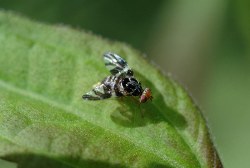New evidence claims first discovery of taro in Māori gardens
The first discovery of tropical Polynesian taro grown in Māori gardens in the 1400s can be claimed by a recent archaeological research project on Ahuahu-Great Mercury Island.
Jointly carried out by the University of Auckland
and Auckland War Memorial Museum,
the project’s new
evidence displays the sophistication with which early Māori
first utilised the New Zealand environment, and also that
they developed wetland gardens for taro.
Previous archaeological evidence favoured kumara as the only viable crop in New Zealand’s cooler climates but this new research, which explored the history of Māori settlement on the island, indicates taro was also an important crop in the early Māori diet, alongside leafy greens such as pūhā and watercress.
During extensive field work on the private island off the eastern coast of Coromandel, palynologist Matthew Prebble of the Australian National University, alongside a team of archaeologists from Auckland University and Auckland Museum, analysed buried sediments from swamps which contained the pollen of taro and other leafy greens.
The deposits have been radiocarbon-dated to the 14th century, around 600 to 700 years ago. Along with the taro and kumara, some of the green leafy plants were probably introduced by Tūpuna Māori, and the gardens on Ahuahu are among some of the earliest known of in New Zealand.
Team member, the University of Auckland’s Professor Simon Holdaway, says archaeologists have long considered the cooler climate of New Zealand, compared to the warmer climate of Polynesian islands, hindered early attempts Māori’s early attempts to grow traditional Polynesian crops such as taro.
“This evidence for early taro production refutes the long-held view that only kumara could be grown in New Zealand,” he says. “It indicates Tūpuna Māori may have initially focused on taro and created specialised wetland gardens for the purpose; kumara then became the main crop after AD 1500,” he says
Pre-European Māori gardens were also thought to have been relatively weed free, but the fossil pollen remains from Ahuahu suggest indigenous edible leafy herbs such as watercress and pūhā were common. The early Māori diet was balanced by a range of vegetables.
Based on this information, it’s now thought that Ahuahu was used by Tūpuna Māori to grow gardens because of the limited amount of kauri and rimu forests which were difficult to clear with fire, the limited exposure to frosts and the similarity of the island to the Polynesian homeland islands.
Matthew
Prebble has also analysed swamp cores from islands in
southern French Polynesia, in Raivavae and Rapa, which
showed many of the same weeds also lived in early taro
gardens in the subtropics and tropics.
The new evidence
suggests that Polynesians gardeners were inventive and
adapted the environment to continue growing their staple
food, taro.
A paper on this ground-breaking research,
authored by Matthew Prebble, was published today in PNAS
(Proceedings of the National Academy of Sciences of the
United States of America).
The project on Ahuahu-Great
Mercury Island is a partnership between University of
Auckland and Auckland Museum, in conjunction with the Fay
and Richwhite families and Ngati
Hei.


 Business Canterbury: Urges Council To Cut Costs, Not Ambition For City
Business Canterbury: Urges Council To Cut Costs, Not Ambition For City Wellington Airport: On Track For Net Zero Emissions By 2028
Wellington Airport: On Track For Net Zero Emissions By 2028 Landcare Research: ANZAC Gall Fly Release Promises Natural Solution To Weed Threat
Landcare Research: ANZAC Gall Fly Release Promises Natural Solution To Weed Threat NZ Anti-Vivisection Society: Auckland Rat Lovers Unite!
NZ Anti-Vivisection Society: Auckland Rat Lovers Unite! University of Canterbury: $1.35 Million Grant To Study Lion-like Jumping Spiders
University of Canterbury: $1.35 Million Grant To Study Lion-like Jumping Spiders Federated Farmers: Government Ends War On Farming
Federated Farmers: Government Ends War On Farming



